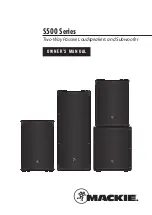
9
ENGLISH (EN)
Before making any connections to your loudspeakers
make sure that all active units in your system are switched
off at the mains. When switching on your sound system or
changing input sources, set the main volume control at a
low level. Turn up the level gradually.
Preparing cables
Split the cable to a depth of about 40mm. Bare the wire to
a depth of 10mm and twist the ends to gather any stray
wires. Crop the cable leaving 7mm of bare wire exposed.
Connecting a terminal
Unscrew the terminal anticlockwise to expose the mounting hole in the
base of the terminal column. Insert the bare end of the cable into the
hole. Retighten the terminal fully hand tight. Make sure there are no stray
wires which could touch adjacent terminals. In the EU it is against safety
regulations to use 4mm loudspeaker plugs.
Stereo Connections
Connect the RED (+) terminal of the RIGHT loudspeaker to the RED,
Positive (+) terminal on the RIGHT channel of the amplifier. Connect the
BLACK (–) terminal of the loudspeaker to the matching BLACK, Negative
(–) terminal of the amplifier. Repeat this procedure for the LEFT channel.
Connections
Terminals and Connectors
The 5010, 5020, 5040 and 5090 have standard two terminal crossovers.
Loudspeaker Cables
Specialist loudspeaker cables will offer a higher standard of reproduction
than general purpose ‘bell’ or ‘zip’ wire. Use cable with generous amounts
of copper for the front and centre channels. Thin cables reduce the bass
and restrict the dynamic range. Surround (rear) channels are less critical.
Speaker cable has a stripe or tracer along one core. By convention this is
connected to the positive terminals. The cables connecting the amplifier
to the front loudspeakers should ideally be the same length. Never join
cables - use complete lengths.
AMPLIFIER
+
-
+
-










































